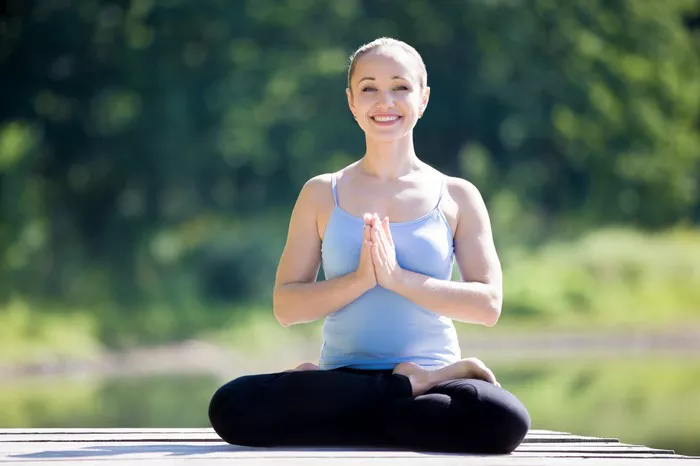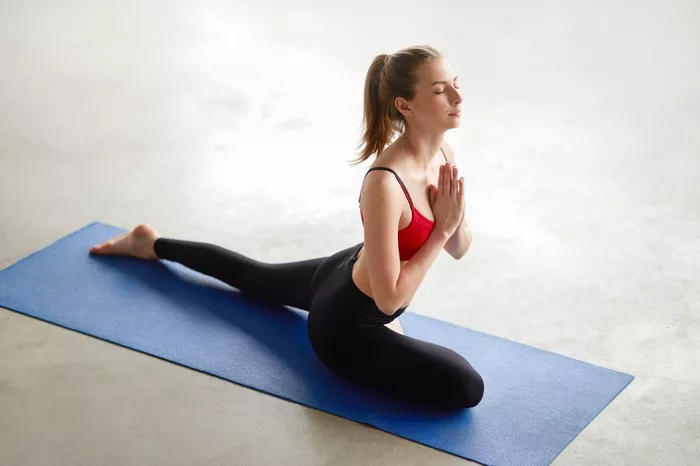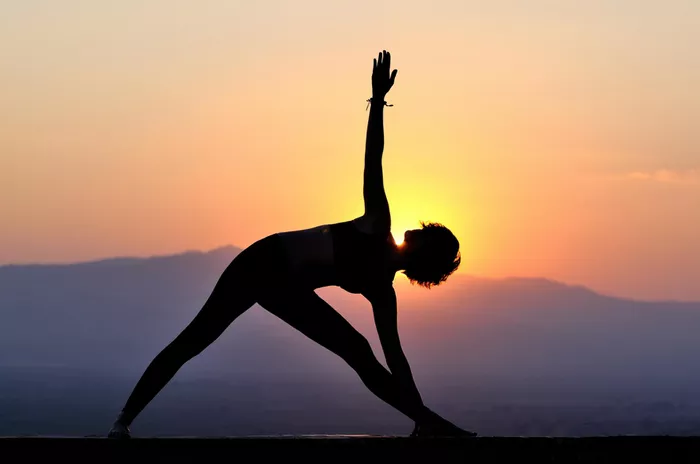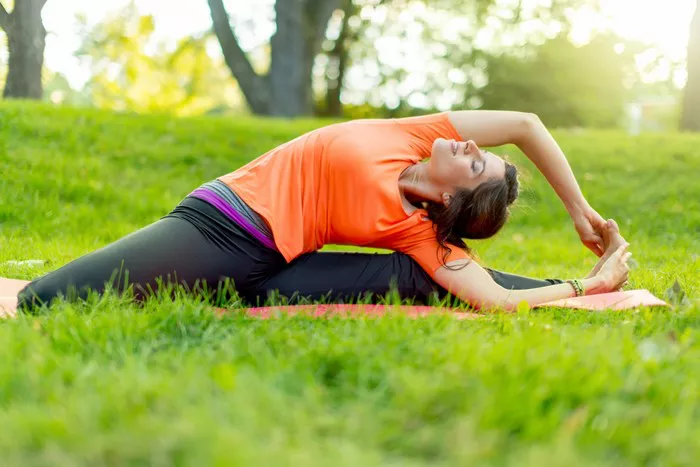The Downward Dog pose, or Adho Mukha Svanasana, is one of the most recognizable and widely practiced asanas (yoga postures) in the world. It is often a foundational posture in both beginner and advanced yoga practices. This pose offers numerous physical benefits, such as improving flexibility, strengthening the arms and legs, and calming the mind. However, as with all yoga poses, it is not suitable for everyone. In certain situations, specific health conditions or physical limitations can make this pose unsafe or uncomfortable.
This article will discuss the various conditions, injuries, and situations in which a practitioner should avoid or modify the Downward Dog pose. Understanding these precautions is essential for a safe and effective yoga practice. We will also explore the modifications that can be made to allow individuals to practice similar benefits with alternative postures.
What is the Downward Dog Pose?
Before diving into who should avoid this pose, it’s essential to have a clear understanding of what Adho Mukha Svanasana is. In Sanskrit, “Adho Mukha” means “downward-facing,” and “Svanasana” refers to “dog pose.” The posture resembles a dog stretching with its forelimbs outstretched and the hips raised in an inverted “V” shape. To perform the Downward Dog:
- Start on all fours with your wrists aligned directly under your shoulders and your knees under your hips.
- Lift your hips up and back, straightening your legs and pressing your heels toward the floor.
- Your hands should be spread wide, with fingers actively pressing into the mat.
- Your head should hang between your arms, with the neck relaxed and long.
- Maintain the position while breathing deeply and holding for several breaths.
While this posture may seem simple, it requires flexibility, strength, and proper alignment to perform safely. Improper alignment or overstretching can lead to strain or injury, especially for those with certain health conditions or physical limitations.
Who Should Not Do Downward Dog Pose?
1. Pregnant Women (Especially in the First Trimester)
During pregnancy, the body undergoes significant changes, and certain postures that involve inversion (elevating the hips above the head) may not be recommended. While Downward Dog is not a deep inversion like headstands or shoulder stands, it still places the body in a position where the pelvis is raised above the heart. This can be uncomfortable for many pregnant women, especially those in their first trimester, when morning sickness and dizziness are common.
Furthermore, as pregnancy progresses, the increased weight in the abdomen and the loosening of ligaments can make balancing in this position difficult or unstable. In such cases, it’s best to avoid this pose or consult a healthcare professional for guidance.
Modifications: Pregnant women can opt for poses that keep the body upright or horizontal, such as Cat-Cow pose (Marjaryasana-Bitilasana) or gentle seated stretches. For those later in pregnancy, supported child’s pose (Balasana) may be a better alternative.
2. Individuals with Wrist Problems or Carpal Tunnel Syndrome
The Downward Dog requires significant weight to be placed on the hands, which can cause strain for individuals with wrist injuries or conditions such as carpal tunnel syndrome. In these conditions, pressing the palms firmly into the floor may aggravate pain, inflammation, or nerve compression.
When performing Downward Dog, the wrists must support much of the body’s weight, potentially causing discomfort or injury for those with weak or injured wrists.
Modifications: Individuals with wrist issues can try placing a wedge or cushion under the wrists for support, or practice Downward Dog on their forearms (known as Dolphin Pose) to reduce pressure on the wrists. Consulting with a healthcare provider before attempting any weight-bearing poses is essential.
3. People with Lower Back Pain or Herniated Discs
The Downward Dog pose requires a certain amount of flexibility and strength in the spine and hips. For individuals with lower back pain, a herniated disc, or other spine-related issues, the pose may exacerbate discomfort. In this position, the spine is arched and lengthened, which, if not done with proper alignment, can place undue strain on the lumbar region.
For those with herniated discs, the stretching of the hamstrings and lower back in Downward Dog may intensify existing discomfort or worsen the condition. Additionally, those who experience chronic lower back pain may have difficulty maintaining the pose for any length of time.
Modifications: To avoid exacerbating back pain, it’s crucial to focus on proper form. A modified Downward Dog with a slight bend in the knees can take pressure off the lower back. It’s also beneficial to engage the core to stabilize the pelvis and spine. Alternative poses, such as Child’s Pose or Cat-Cow, can provide similar benefits without aggravating the lower back.
4. Individuals with Shoulder Injuries
Downward Dog places a considerable amount of weight on the shoulders, requiring them to support much of the body’s weight. Those with shoulder injuries, such as rotator cuff strains, dislocations, or tendinitis, should be cautious when practicing this pose. The strain on the shoulder joints can worsen pain and lead to further injury if not done carefully.
Additionally, if the shoulder blades are not properly engaged, the shoulder joints can become overstretched, leading to discomfort or further injury.
Modifications: For individuals with shoulder issues, it’s crucial to keep the shoulder blades engaged, meaning pulling them down and away from the ears. Using props such as blocks under the hands or practicing the pose with less intensity can help reduce strain on the shoulders. Alternatively, Dolphin Pose (forearm Downward Dog) can be an option to relieve stress on the shoulders while still gaining many of the benefits.
5. Those with Glaucoma or Eye Conditions
Inversions, even mild ones like Downward Dog, can increase pressure in the eyes. This can be particularly problematic for individuals with glaucoma, a condition that increases the pressure inside the eyes, potentially damaging the optic nerve and leading to vision loss.
While Downward Dog is not a deep inversion, it is still a pose that may increase eye pressure for those with glaucoma or other eye conditions such as retinal detachment or macular degeneration. For these individuals, performing this pose can risk aggravating their eye condition.
Modifications: People with glaucoma should avoid any postures that involve the head being lower than the heart, including Downward Dog. Instead, they can focus on standing poses, seated poses, or gentle twists that do not put pressure on the eyes.
6. People with Knee Issues
Knee problems, such as arthritis, meniscus tears, or patellar issues, can make it difficult or painful to perform Downward Dog. The pose requires straightening the legs and pressing the heels toward the floor, which can strain the knees, especially if the person already has limited flexibility in the hamstrings or quadriceps. For individuals with knee pain or instability, this can be a risky pose, as incorrect alignment can exacerbate discomfort.
Modifications: For individuals with knee problems, it may help to keep a slight bend in the knees, which alleviates tension on the joint. Another modification involves practicing the pose with the feet on a soft surface or using a blanket under the knees when transitioning into or out of the pose.
7. Those with High Blood Pressure or Heart Conditions
The Downward Dog pose involves placing the body in an inverted position, which can increase pressure in the circulatory system. For individuals with high blood pressure or heart conditions, this change in posture may lead to dizziness, lightheadedness, or discomfort. The inversion can also cause blood to pool in the head, potentially aggravating heart-related issues.
Modifications: People with heart conditions or high blood pressure should consult with their healthcare provider before attempting this pose. If it is deemed safe, it is advisable to avoid deep inversions or practice modified versions of Downward Dog, where the head stays higher than the heart.
8. Beginners Without Proper Warm-Up
Finally, even for generally healthy individuals, the Downward Dog pose can be challenging for beginners who do not have adequate flexibility or strength. Without a proper warm-up, individuals may experience discomfort, muscle strain, or injury. It is essential to approach this pose with caution, ensuring that the body is properly prepared before attempting the posture.
Modifications: Beginners should start with preparatory poses to warm up the hamstrings, shoulders, and wrists before attempting Downward Dog. Using props like blocks or a wall for support can also make the pose more accessible for those new to yoga.
Conclusion
While the Downward Dog pose is a fundamental and beneficial posture in yoga, it is not suitable for everyone. Individuals with specific health conditions such as pregnancy, wrist injuries, back pain, glaucoma, or heart conditions may need to avoid or modify the pose. Listening to your body and consulting a healthcare professional when necessary is crucial for maintaining safety in your practice.
Yoga should always be approached with mindfulness and respect for one’s body. By modifying poses and exploring alternatives, you can still enjoy the physical and mental benefits of yoga without compromising your health.
Related topics




















